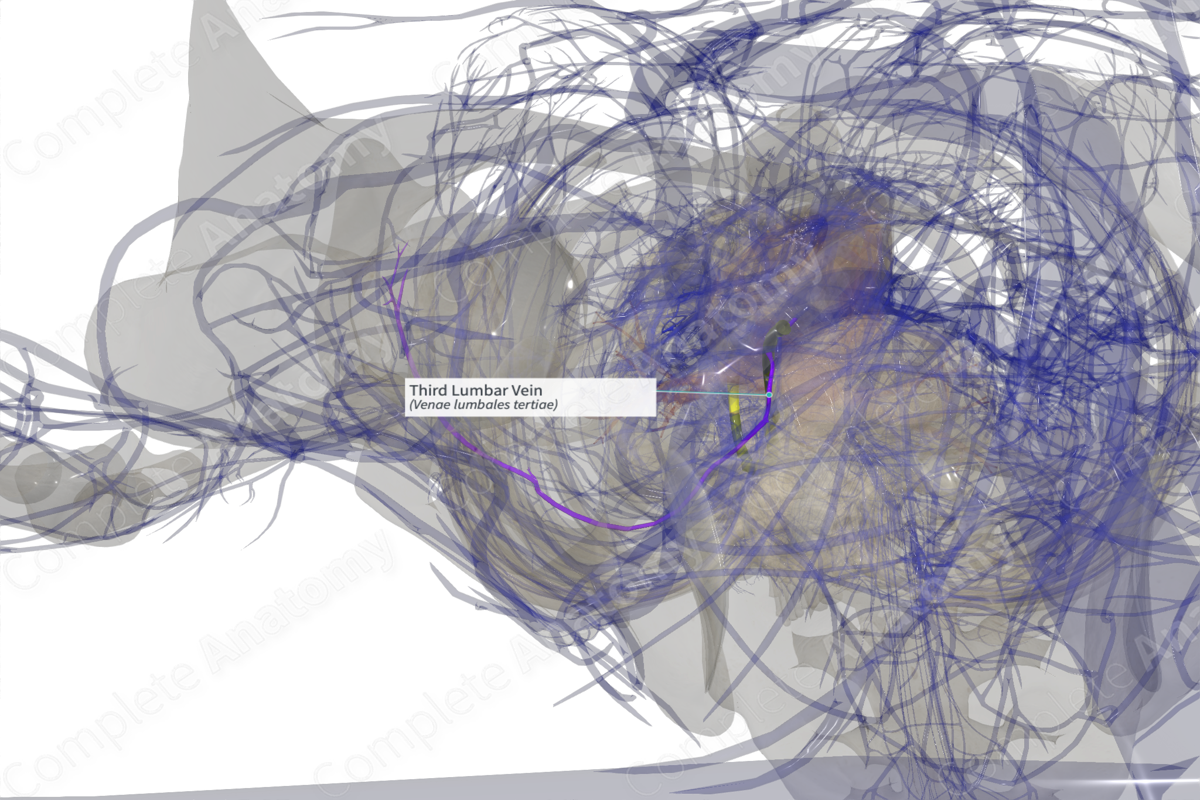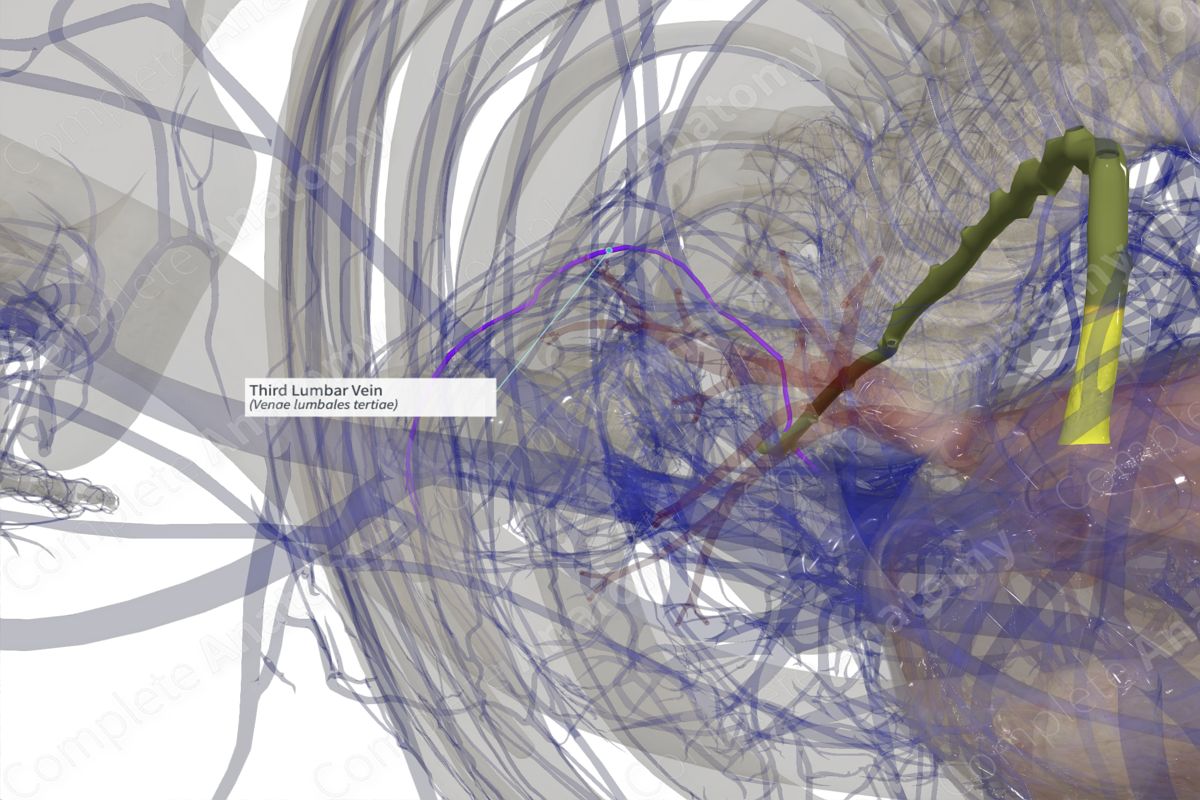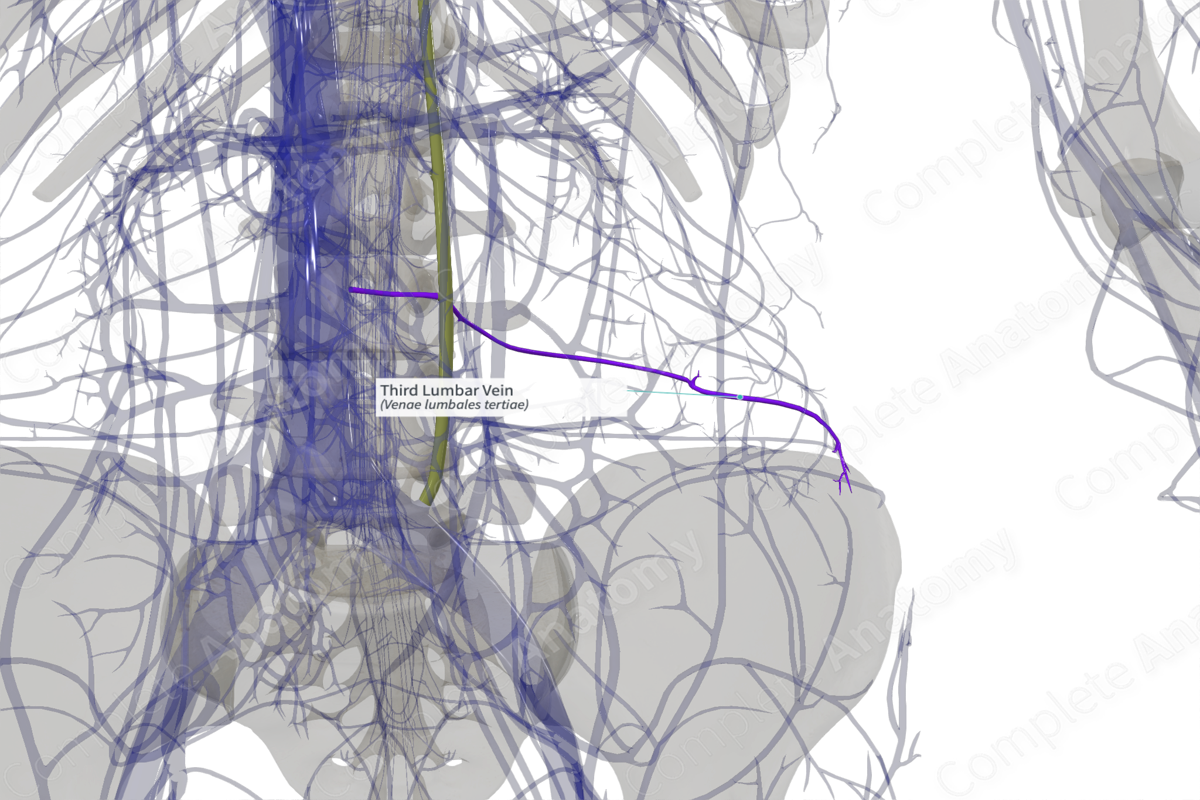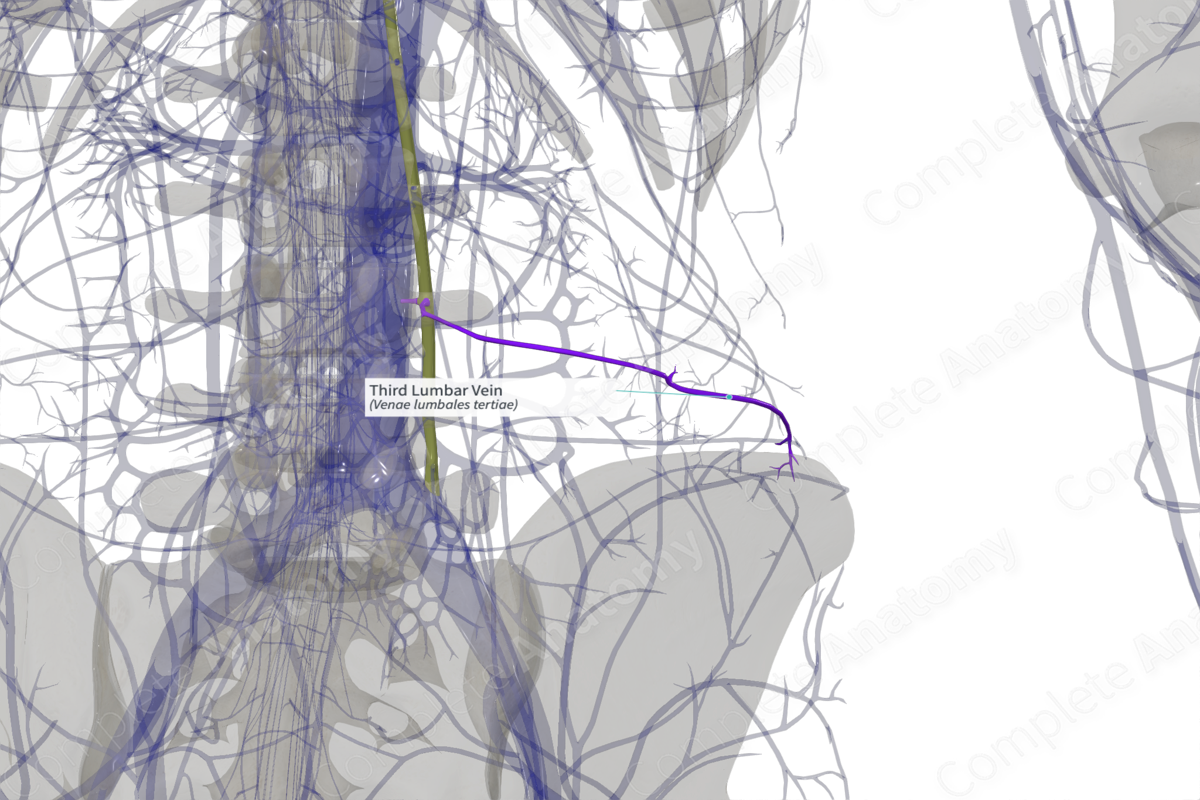
Quick Facts
Origin: Between the internal abdominal oblique and transversus abdominis muscle in the anterior abdominal wall.
Course: Travels posterolaterally then medially towards the ascending lumbar vein.
Tributaries: Lumbar vertebral plexus.
Drainage: Posterior, lateral, and anterior abdominal wall.
Related parts of the anatomy
Origin
The lumbar veins originate in the anterior abdominal wall, between the internal abdominal oblique and transversus abdominis muscles. At their origin, the lumbar veins form anastomoses with the lower intercostal, subcostal, and lumbar veins.
Course
The lumbar veins accompany the corresponding lumbar arteries and are equivalent to the posterior intercostal veins. From its origin, the third lumbar vein travels posterolaterally then medially, between the transversus abdominis and the internal abdominal oblique muscles, towards the ascending lumbar vein. The ascending lumbar vein then joins with the subcostal vein to form the azygos vein on the right, and the hemiazygos vein on the left.
Tributaries
The lumbar veins receive the lumbar vertebral plexus. Additionally, they form anastomoses with the lower intercostal, subcostal epigastric, circumflex iliac, and lateral thoracic veins anteriorly.
Structures Drained
The lumbar veins drain the posterior, lateral, and anterior abdominal wall.
Learn more about this topic from other Elsevier products
Vein

A venous sinus is a vein with a thin wall of endothelium that is devoid of smooth muscle to regulate its diameter.




